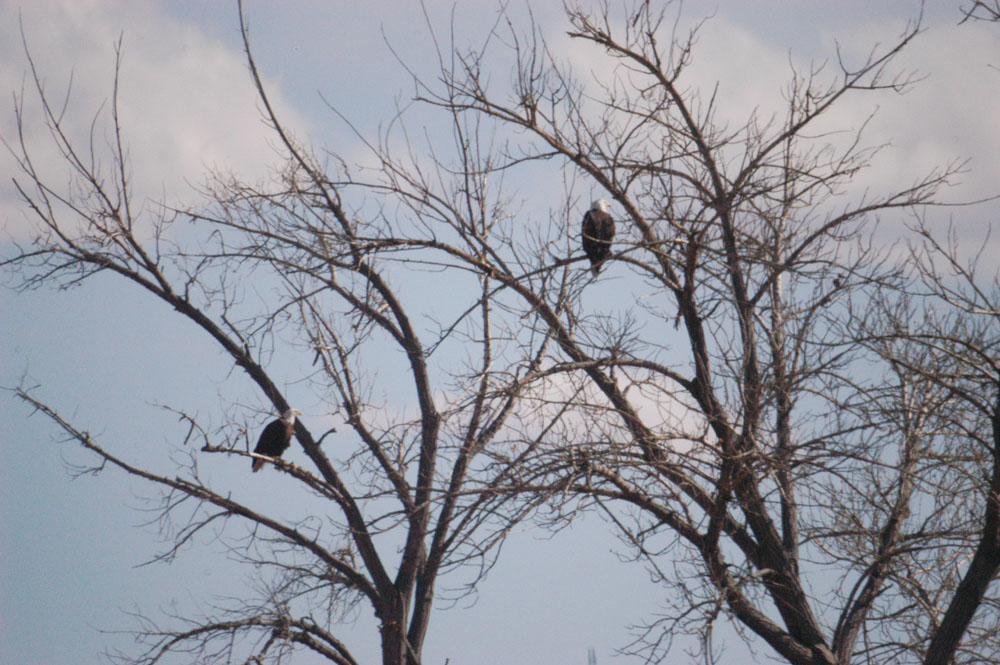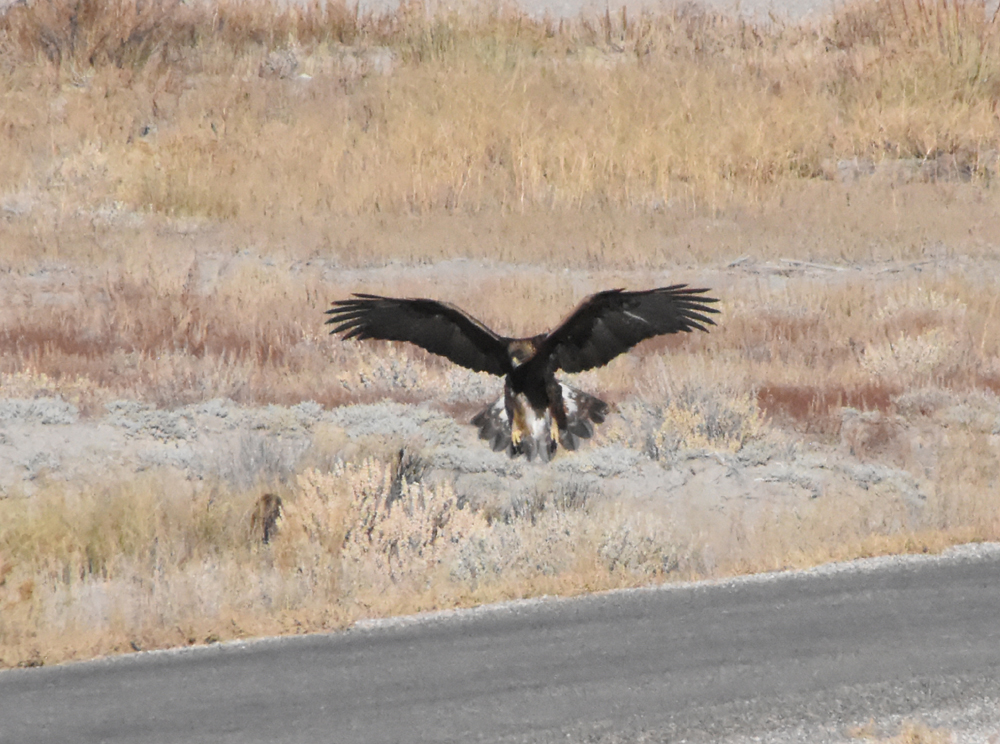
There are around 60 different species of eagle in the world and they are found on every continent except Antarctica but only 2 are found in the lower 48 states, although two other eagles occasionally seen in the U.S. are visitors from Asia and Eurasia and find their way to North America through the Aleutian Islands. They are the Steller's Sea Eagle and the White-tailed Eagle, also known as the "Gray-sea Eagle" and they sometimes nest in Alaska. Bald Eagles live year round in northeastern Utah but some eagles migrate and the ones we see in Price are those that summer in Canada and winter in central and southern Utah.
In the wild, 70-80% of eagles die before they reach adulthood at five years of age. An eagle that makes it to adulthood might live 20-25 years. In captivity, eagles are known to live much longer, 40+ and up to 50 years, due to a controlled environment, nutrient rich diet and veterinary care. Eagles use both monocular and binocular vision, meaning they can use their eyes independently or together depending on what they are looking at. An eagle eye has two focal points called foveae, one of which looks forward and the other to the side at about a 45 degree angle. These two foveae allow eagles to see straight ahead and to the side simultaneously. The fovea at 45 degrees is used to view things at long distances. An eagle can see something the size of a rabbit running at three miles away. The average wingspan of a Bald Eagle or a Golden Eagle ranges from 6 to 7.5 feet, depending upon overall size. Eagles in northern parts of their range tend to be larger overall, including a larger wingspan. Eagles can achieve 30 mph using powerful wing-beats and even faster when diving after prey. Bald eagles can dive at up to 100 mph; golden eagles at up to 150 mph.
The weight of both Bald Eagles and Golden Eagles varies depending on latitude and gender. Generally, males weigh approximately 25% less than females from the same area. The average weight of a female eagle is 10-14 pounds, however there exists great variation depending on where an eagle is from. Southern eagles tend to be smaller than those in northern parts of their range. For example in Alaska, females might weigh up to 18 pounds, whereas eagles in Florida can weigh as little as 6-8 pounds. This difference in size between males and females is referred to as reverse sexual dimorphism. Male and females eagles have the same coloration.
Golden Eagles live year round in all of Utah. The average clutch is 1-3 eggs with occasional reports of 4. The eggs are laid in 3 to 4 day intervals and hatch in the order they are laid. Golden eagles prefer open or semi-open undeveloped habitat. When nesting on cliffs, the selection of the site may be based on an exposure that protects the nest and eaglets from inclement weather conditions. Golden eagles usually nest on cliffs or in trees in open or semi-open habitat. They avoid heavily forested and developed areas but have been observed nesting on human-made structures such as observation towers or windmills. Golden eagles are terrestrial predators that feed on mammals, birds and reptiles. They are known to take prey as large as pronghorn or white-tailed deer.


